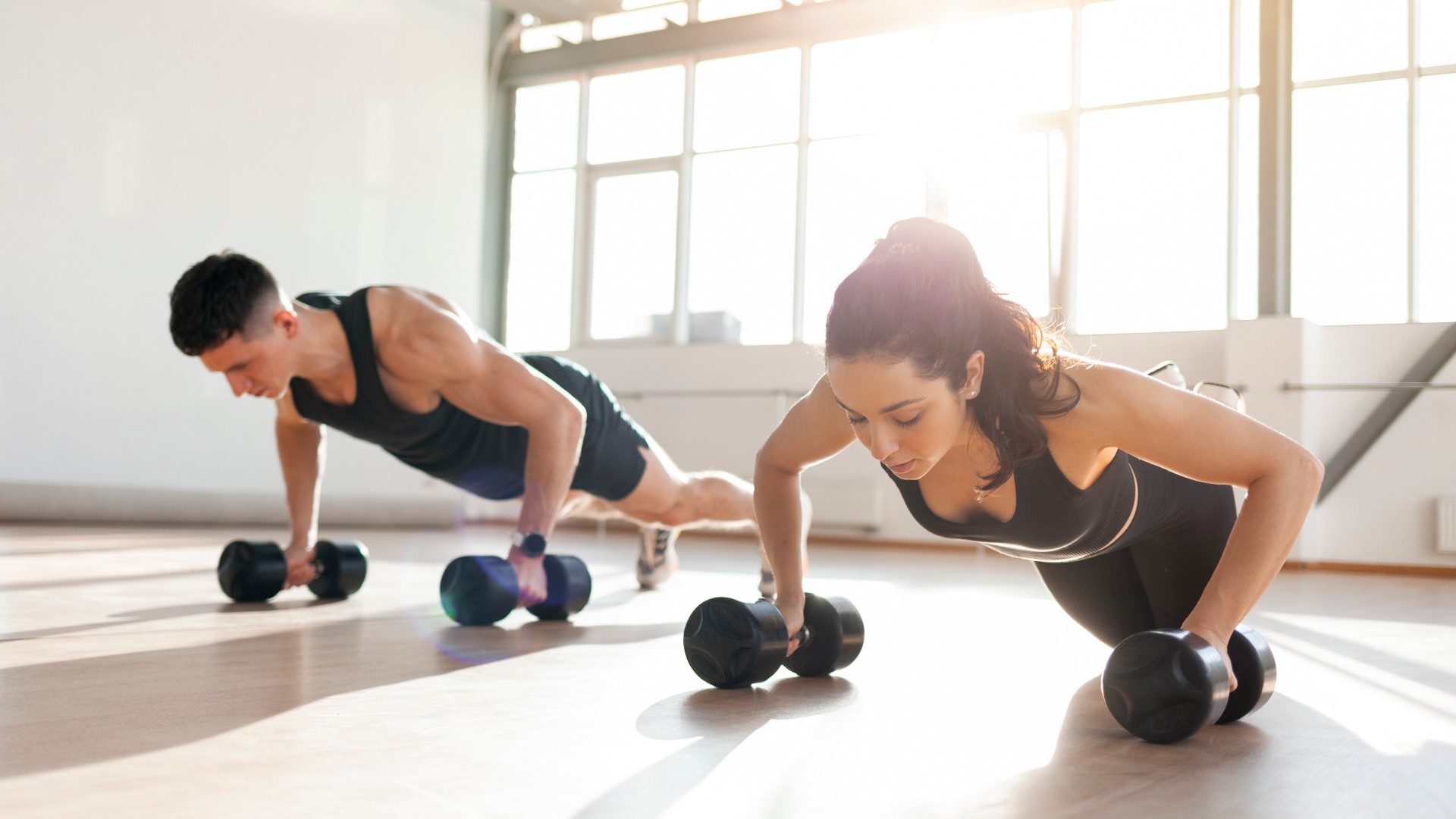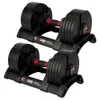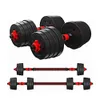
The man maker does not a man or woman make, but it certainly puts them in the pain cave. I like to enter the pain cave when I exercise, so why not add 70 man makers into my daily routine for seven days? I often put together short fitness challenges to test my body, fitness and mindset, and this one certainly ticked all of those boxes.
It’s worth noting that it’s not about expecting big results within one week when we do these challenges. It takes months of consistency with your exercise routine, progressively overloading your muscles and dialing into lifestyle choices like diet to build muscle definition, lose fat, and improve overall health and fitness.
That doesn’t mean you can’t learn a few things from the experience, and I definitely picked up a few lessons along the way. If you plan to follow suit with any fitness challenges at Tom’s Guide, I suggest choosing a rep count that works for you — I don’t recommend high reps of the same exercise in the long term, for example.
So, grab a pair of the best adjustable dumbbells and find out what happened 490 reps later.
Are man makers a good workout?
Man makers are a full-body workout and tap into strength and cardio by connecting a series of exercises into a flow sequence. And, despite having a name reminiscent of the 1950s (yikes), anyone can do this move.
I wouldn’t program man makers as a standalone exercise, but as part of a circuit, metcon, or HIIT workout, it’s a brilliant addition to any routine if you want to work muscles all over your body in a single move.
How to do dumbbell man makers
You’ll need a set of dumbbells and your body weight to do a man maker. It combines a burpee, push-up, renegade row, clean and squat and overhead press into one exercise.
Sign up to get the BEST of Tom's Guide direct to your inbox.
Get instant access to breaking news, the hottest reviews, great deals and helpful tips.
- Start standing and hold a dumbbell in each hand with your feet shoulder-width distance apart
- Brace your stomach to engage your core
- Squat down keeping your back flat, heels planted and chest lifted and position the dumbbells down in front of you shoulder-width distance apart
- To target your triceps more, position your hands closer together
- Step or jump your feet back into a push-up position and perform a push-up by lowering your chest to the floor. Ensure your shoulders are stacked over your wrists and your hips are aligned with your shoulders. Lower your knees to the floor for a push-up regression
- Push back up to the plank position and perform a renegade row by rowing one dumbbell back toward your hip, followed by the other
- Avoid swinging your hips, lifting your bum, or dropping your hips toward the floor
- Step or jump your feet behind the dumbbells, lift your chest, keep your back flat and pull your shoulders back and down
- Press through your heels to begin standing, thrust the weights through your legs, rack them up to your shoulders, lifting your elbows and extending your hips and knees
- Catch the dumbbells in the front rack as you sit into a deep squat, keeping your back flat, weight distributed through your feet and thighs parallel to the floor
- As you stand, perform the overhead press, punching both dumbbells into the air, keeping your triceps close to your ears
- Lower the weights back to your shoulders, reset to the starting position and repeat
Here's what happened and what I learned along the way.
Prep is key
Man makers are a full-body compound exercise, targeting your back, including your lats, rhomboids and traps, deltoids (the shoulders), various stabilizing core muscles, the glutes and hip flexors, quads, hamstrings, biceps, triceps (which assist with rowing and pressing, respectively) and pecs.
I recommend some prep before jumping into man makers, especially with the high reps. I programmed seven sets of 10 reps, performing them every minute on the minute as an EMOM and taking rest up to the minute after finishing each round of reps.
Prep for me looked like some mobility work, warming my legs and upper body through gentle movement and bodyweight man makers to ensure my muscles were warm beforehand, and I did this throughout the week.
It's easy to lose form
There are so many places you can go wrong during man makers at every stage so I perform exercises in the mirror where possible. Your back can hunch coming into and out of the squat, the hips can drop during push-ups and swing or push upward too far during renegade rows and the lower back can arch during the overhead press.
Core engagement is key, but it’s easy to throw the words around without understanding what that means. I brace my stomach as if someone is about to punch me in the gut, then practice expansively breathing toward my stomach, rather than my chest. Squeezing the glutes and quads can also help stabilize the torso in the plank position as you transition between moves.
I felt puffed
The renegade rows are my weakest exercise so I chose weights to suit this move despite being capable of lifting heavier for the other phases of man makers. I went for about half my usual lifting weight, ensuring I wouldn’t drop my form in favor of hitting the reps.
The high reps and time cap per round also upped the ante and made this a more endurance-based exercise, ramping up my heart rate and bringing a cardio element to the workout. I found it super challenging despite the lighter weights and collapsed into a sweaty heap after hitting my rep count each day.
It's a full-body workout
Hitting every major muscle group, the move provides a full-body workout in a short time and I could feel this exercise head to toe afterward — thankfully not in my lower back. If you’ve never tried the move before, I wouldn’t recommend 70 reps every day and I’d add more rest to give your muscles a chance to recover.
I scaled back on my other workouts slightly and used this exercise as a finisher on days when I did train, and capped it at a week to be sure I wouldn’t over-train. The result? Muscles torched from head to toe, but, of course, no physical changes to my body. I also felt it far more in my abs than expected.
I mixed up my kit
Throughout the week, I experimented with kettlebells (harder to grip, control and stabilize, recruiting the forearms and wrists more) and barbells. I recommend learning how to hold a kettlebell properly as the handle-bell positioning is different from a dumbbell and requires some technique to control as you move the bells from floor to ceiling and back again.
The barbell man maker takes more technique as you’ll jump back and perform the push-up over the bar, stabilizing it in position, then clean the barbell to your shoulders, perform the front squat, finally pressing the weight overhead. I find free weights better for this exercise because although you’ll lift less weight, you’ll work each side separately and evenly without a more dominant side taking over.
How many man makers should you do?
This is entirely up to you based on your current fitness level, experience with man makers and lifting ability. I programmed based on my current training schedule and the load I’m comfortable using for each move, so I recommend using your body weight first, then adding light dumbbells and practicing each move first before slowly adding weight.
What did I learn after a week of man makers?
Man makers are effective for building conditioning, endurance and stronger muscles. To train toward strength, fewer reps (between 1-6 reps) and higher sets (4-6) are sufficient, and for endurance-based metcon workouts, you can jack up the reps and sets as part of a circuit or stick to around 3-4 sets of 8-15 reps.
More from Tom's Guide
- I'm a personal trainer, this one-minute stretch opens your hips and builds lower body flexibility
- Forget sit-ups — build core strength and improve your posture with this 10-minute abs workout
- I'm a personal trainer — this 3-move foam roller routine reduces back stiffness in just 10 minutes

Sam Hopes is a level 3 qualified trainer, level 2 reiki practitioner and senior fitness writer at Tom's Guide. She is also currently undertaking her Yoga For Athletes training course. Sam has written for various fitness brands and websites over the years and has experience across brands at Future such as Live Science, Fit&Well, Coach, and T3.
Having worked with fitness studios like F45 and Virgin Active, Sam now primarily teaches outdoor bootcamps, bodyweight, calisthenics and kettlebells. She also coaches mobility and stretching-focused classes several times a week and believes that true strength comes from a holistic approach to training your body.
Sam has completed two mixed doubles Hyrox competitions in London and the Netherlands and finished her first doubles attempt in 1:11.



